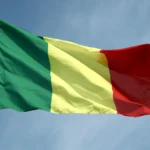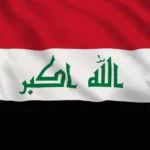
Bangladesh, east of India in the Bay of Bengal, is a South Asian country with lush vegetation and many waterways. Its Padma (Ganges), Meghna, and Jamuna rivers form fertile plains, and boat trips are common. On the southern coast, the Sundarbans, a vast mangrove forest shared with the East Indies, is home to the Royal Bengal Tiger.
The Cox Bazar Beach is one of the most popular tourist destinations in the country of Bangladesh, and it’s the third longest beach in the world.
The name “Bangladesh” means “Country of Bengal.”
It is estimated that somewhat 70% of the population of Bangladesh are farmers.
The GDP of Bangladesh is $195.1 billion.
Some 96% of the country’s revenue from exports come from the clothing and textile industry.
Bangladesh has over 2,000 daily periodicals and newspapers.
Despite the fact that many of the large fashion brands have productions here, more than 50 million people are still living under the poverty line, which is equal to about 30% of the total population.
Bengali or Bangla is the official language.
The Bangladesh War of Independence was bloody but resulted in independence in 1971.
The main ethnic group in Bangladesh is Bengali.
Hilsha Fish Curry is the national dish of Bangladesh.
The most popular sport in Bangladesh is cricket.
About 90% of the population are Muslims.
Bangladesh is only about one-tenth the size of Alaska.
The Sundarbans is the largest mangrove forest in the world, and it’s protected as a UNESCO World Heritage Site.
Bangladesh is the 8th most populous country in the world.
In 2017, Bangladesh ranked 143rd of the least corrupted countries in the world.
Bangladesh is also the 5th most populous country in Asia.
The Royal Bengal Tiger is the national animal of Bangladesh.
Dhaka is the capital and largest city in Bangladesh.
Bangladeshi people don’t smile too often because it is seen as immature.
Bazar Beach is 75 miles long and is one of the longest beaches in the world.
The capital city of Dhaka is home to almost 9 million people. More than 2 million of these individuals either live in slums or are without any proper shelter.
Three percent of the world’s tea comes from Bangladesh.
According to the World Health Organization, the number of hospital beds per 1,699 people is just four. Additionally, only 3 percent of Bangladesh’s entire GDP expenditure is allocated to health care.
Mahasthangarh is the oldest city in Bangladesh.
Bangladesh has reduced its total fertility rate from 5 (children per woman) in 1966 to just 2.44 in 2016.
Kabaddi is the country’s national game.
In 2015, just 1 percent of the population engaged in open defecation compared to 34 percent in 1990. Though the rate of growth is slow at only 1.1 percent annually, the current rate of improved sanitation is at 61 percent.
The national fruit of Bangladesh is Jackfruit.
Poverty and extreme poverty are declining, and currently stand at 31.5 and 17.6 percent respectively.
Over 10% of the land is comprised of forests.
Rates of poverty have almost halved since 1990, with 44.2 million people considered impoverished in 1991 and 24.1 million in 2015.
The highest peak in Bangladesh is Saka Haphong at 1,052 m.
For some time in history, Bangladesh was under the Mughal rule. In the south-western part of the capital Dhaka, there’s a beautiful fortress from the 17th century which was built under a Mughal emperor. The name of the palace is Lalbagh Kella (or the Fort Aurangabad), and it is located on the banks of the river Buriganga.
The national anthem has been written by Rabindranath Tagore.
Bangladesh has six fully distinct seasons, and it’s sometimes called “the playground of seasons”. Those six seasons are the Summer, the Monsoon, the Autumn, the Late Autumn, the Winter and the Spring.
The Magpie Robin is the national bird of Bangladesh.
Bangladesh has the second fastest river in the world, right after Amazon. Its name is “Padma.”









